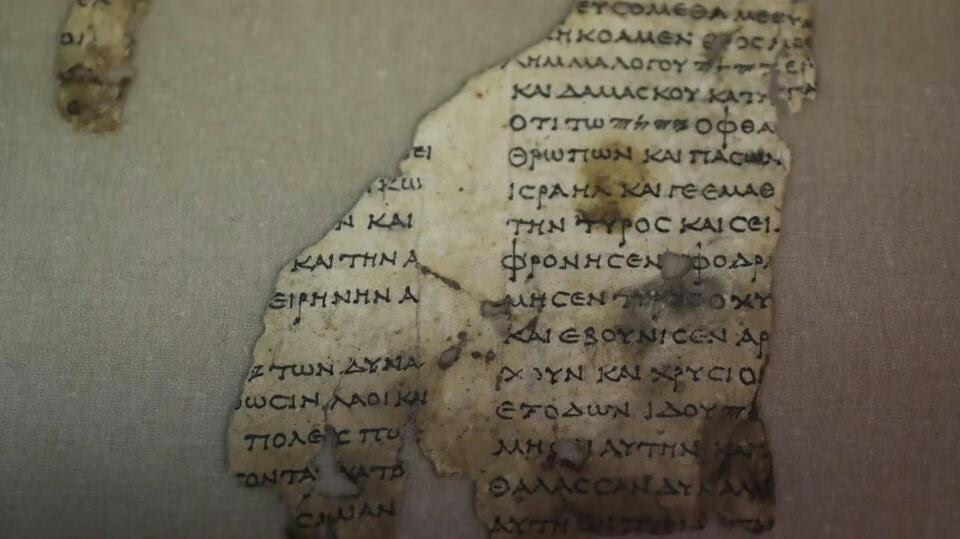Burials in ancient Egypt were never merely about laying the body to rest. They were meticulously designed spiritual journeys, carefully crafted to ensure safe passage through the perilous corridors of the afterlife. Among the many treasures unearthed from the sands of time, few are as evocative as funerary papyri — long scrolls inscribed with words, images, and spells that served as a roadmap for eternity.
One such treasure belonged to Nani (often written as Ni), a chantress of Amun-Re who lived during Egypt’s Third Intermediate Period. Not only was she a woman of religious standing, she carried the prestigious title of “King’s Daughter.” Her papyrus, stretching over 17 feet in length, reveals a remarkable portrait of her spiritual journey, her moral worthiness, and the powerful beliefs of her age.
This scroll, delicately placed within a hollow wooden figure of Osiris at her burial, continues to whisper across three millennia — affirming her righteousness and her eternal place among the gods.
Nani: Chantress and “King’s Daughter”
To understand the importance of this papyrus, we must first know Nani herself. She was a chantress of Amun-Re, meaning she participated in the great temple rituals, lending her voice to the hymns that connected mortals with the divine. Chantresses held respected religious roles, and their voices were seen as sacred instruments.
She also carried the title “King’s Daughter.” While not always literal in this period, it often marked women of elevated lineage. In Nani’s case, scholars believe she may have been the daughter of Pain Gem I, the high priest of Amun and ruler of Thebes — a man who wielded both religious and political authority.
Nani lived into her seventies, a remarkable age for the time. Her longevity alone suggests status and care, but it is the richness of her burial goods — especially the papyrus — that underscores her importance.
The Book of the Dead: A Guide to Eternity
The scroll interred with Nani is a version of the Book of Coming Forth by Day — better known to us as the Book of the Dead. This wasn’t a single, fixed text, but a flexible collection of spells, hymns, and instructions tailored for each individual. Its purpose was clear: to guide the soul through the dangers of the afterlife and secure its acceptance into the eternal company of the gods.
The spells helped the deceased:
- Overcome demons and obstacles.
- Speak before divine judges.
- Transform into sacred forms (birds, lotuses, falcons).
- Join the sun god Ra on his daily journey.
For Nani, her papyrus represented both a spiritual passport and a safeguard. Without it, her soul risked becoming lost, silenced, or annihilated. With it, she could proclaim her innocence, assert her devotion, and pass into eternity.
The Central Scene: Weighing of the Heart (Spell 125)
The most iconic image on Nani’s papyrus is the Judgment Scene — the weighing of the heart.
The Setting
We are transported into the Hall of Judgment, where souls must prove their worth. Here, the heart of the deceased — believed to be the seat of memory, morality, and truth — is placed upon a scale. Opposite it lies Maat, the embodiment of truth, harmony, and cosmic order, symbolized as a small figure or an ostrich feather.
The Participants
- Nani: Standing humbly to the left, she holds her eyes and mouth in her hands — a striking detail. This symbolizes the risk she faced: if found unworthy, she would lose the faculties of speech and sight forever.
- Anubis: The jackal-headed god of mummification, kneels beside the scale, ensuring its balance and integrity.
- Thoth: Represented by a baboon perched above the beam, he records the outcome with divine precision.
- Osiris: The great judge of the dead, wrapped like a mummy, presides from his throne. His hands emerge from the wrappings to clasp a crook — symbol of kingship. Before him rests an offering of beef, a token of eternal sustenance.
- Isis: The goddess, wife, and sister of Osiris, stands behind Nani, her hieroglyph marking her divine support.
The Outcome
The scale tips perfectly balanced. Nani’s heart is neither too heavy with sin nor too light with dishonor. Anubis declares: “Her heart is an accurate witness.”
To which Osiris replies: “Give her her eyes and her mouth since her heart is an accurate witness.”
This exchange confirms Nani’s acceptance. Her faculties are restored, her soul vindicated, her eternity secured.
Above the Scene: Three Moments of Devotion
While the central judgment dominates the scroll, the upper register offers three more intimate glimpses into Nani’s spiritual devotion:
- Worshiping the Divine Palette
Nani is shown praising the palette of writing — a symbol of creation, communication, and eternal record. Writing was sacred in Egypt, the medium through which fate and divine truth were inscribed. By honoring it, Nani aligned herself with cosmic permanence. - Honoring Horus the Falcon
Horus, the falcon-headed sky god, embodied kingship, protection, and vengeance against chaos. By worshiping his statue, Nani sought his guardianship and legitimacy in her eternal role. - Standing Beside Her Tomb
Perhaps the most human of the vignettes, Nani is shown beside her own tomb. This is both a reminder of mortality and an assertion of continuity. She acknowledges death yet embraces the eternal life that follows.
Together, these scenes illustrate the balance between devotion, protection, and remembrance — the triad that secured her passage.
Symbolism of the Gods in the Papyrus
Every deity depicted around Nani had a crucial role:
- Osiris: Judge and lord of the afterlife, granting renewal.
- Isis: Divine support, intercession, and resurrection.
- Anubis: Guardian of embalming, protector of judgment.
- Thoth (baboon form): Record-keeper, ensuring truth in divine accounting.
- Horus: Protector of kingship, falcon of the skies.
Their presence reflects a protective network around Nani. She did not journey alone — she was guided, supported, and witnessed by the divine.
Morality and Eternal Truth in Ancient Egypt
What makes Nani’s papyrus compelling is not just its imagery but its moral weight. The judgment scene underscores a timeless truth:
- Eternal life was not granted by wealth, titles, or political power.
- It was earned through truth, balance, and moral conduct.
This idea resonates across cultures and centuries. For Egyptians, the heart was the ultimate witness. No excuses, no bribes, no masks. Your heart revealed who you were.
Nani’s balanced heart proclaimed her righteousness.
The Role of Funerary Equipment
The papyrus was not buried in isolation. It was carefully rolled and placed inside a wooden Osiris figure, combining text, image, and sacred form. This was a hallmark of the Third Intermediate Period, when burial practices emphasized multiple layers of protection:
- Texts (spells, prayers).
- Figures (Osiris, protective deities).
- Rituals (mummification, offerings).
For Nani, this ensemble declared that her voice, sight, and spirit would endure.
Cultural Treasure: A Scroll Over 17 Feet Long
When fully unrolled, Nani’s papyrus stretches an astonishing 17 feet. Each inch is filled with care — text lines, vignettes, hieroglyphs, divine figures. It is both personal document and cultural treasure.
As an artifact, it offers us:
- A window into the beliefs of the Third Intermediate Period.
- A record of how ordinary Egyptians (beyond pharaohs) invested in eternal security.
- A narrative of morality, devotion, and divine judgment that still resonates today.
Conclusion: The Eternal Voice of Nani
Nani’s papyrus was more than parchment and ink. It was a voice across eternity. Each spell she carried, each image inscribed, each god invoked — together, they affirmed her worthiness and safeguarded her journey.
When Anubis declared her heart faithful and Osiris restored her eyes and mouth, Nani’s existence was renewed. She was no longer mortal. She was eternal.
Today, thousands of years later, her scroll still speaks. It tells us that truth outweighs all wealth, that devotion endures beyond death, and that the soul, once vindicated, is forever free.
In the balance of the scales, Nani found not just judgment but immortality.




